Little red and the wolf
Little Red Riding Hood
This story is featured in Favorite Fairy Tales and Short Stories for Children.
You may want to compare it to The Brothers Grimm version, Little Red-Cap.
Once upon a time there was a dear little girl who was loved by every one who looked at her, but most of all by her grandmother, and there was nothing that she would not have given to the child. Once she gave her a little cap of red velvet, which suited her so well that she would never wear anything else. So she was always called Little Red Riding Hood.
One day her mother said to her, "Come, Little Red Riding Hood, here is a piece of cake and a bottle of wine. Take them to your grandmother, she is ill and weak, and they will do her good. Set out before it gets hot, and when you are going, walk nicely and quietly and do not run off the path, or you may fall and break the bottle, and then your grandmother will get nothing. And when you go into her room, don't forget to say, good-morning, and don't peep into every corner before you do it.
"
I will take great care, said Little Red Riding Hood to her mother, and gave her hand on it.
The grandmother lived out in the wood, half a league from the village, and just as Little Red Riding Hood entered the wood, a wolf met her. Little Red Riding Hood did not know what a wicked creature he was, and was not at all afraid of him.
"Good-day, Little Red Riding Hood," said he.
"Thank you kindly, wolf."
"Whither away so early, Little Red Riding Hood?"
"To my grandmother's."
"What have you got in your apron?"
"Cake and wine. Yesterday was baking-day, so poor sick grandmother is to have something good, to make her stronger."
"Where does your grandmother live, Little Red Riding Hood?"
"A good quarter of a league farther on in the wood. Her house stands under the three large oak-trees, the nut-trees are just below. You surely must know it," replied Little Red Riding Hood.
The wolf thought to himself, "What a tender young creature.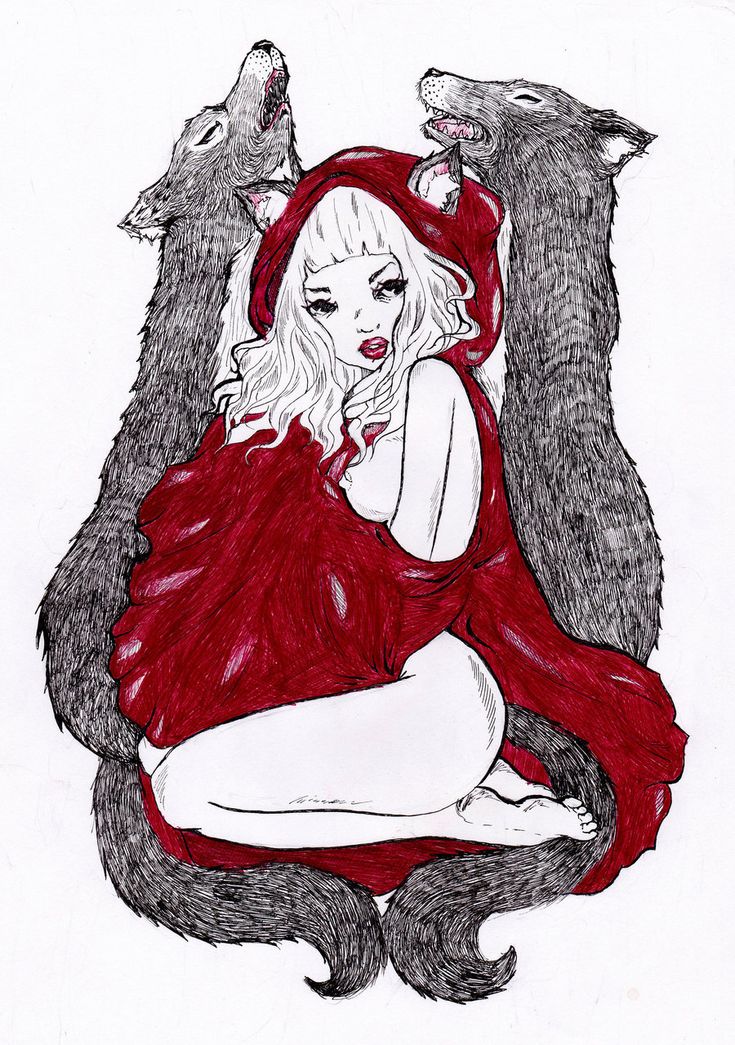 What a nice plump mouthful, she will be better to eat than the old woman. I must act craftily, so as to catch both." So he walked for a short time by the side of Little Red Riding Hood, and then he said, "see Little Red Riding Hood, how pretty the flowers are about here. Why do you not look round. I believe, too, that you do not hear how sweetly the little birds are singing. You walk gravely along as if you were going to school, while everything else out here in the wood is merry."
What a nice plump mouthful, she will be better to eat than the old woman. I must act craftily, so as to catch both." So he walked for a short time by the side of Little Red Riding Hood, and then he said, "see Little Red Riding Hood, how pretty the flowers are about here. Why do you not look round. I believe, too, that you do not hear how sweetly the little birds are singing. You walk gravely along as if you were going to school, while everything else out here in the wood is merry."
Little Red Riding Hood raised her eyes, and when she saw the sunbeams dancing here and there through the trees, and pretty flowers growing everywhere, she thought, suppose I take grandmother a fresh nosegay. That would please her too. It is so early in the day that I shall still get there in good time. And so she ran from the path into the wood to look for flowers. And whenever she had picked one, she fancied that she saw a still prettier one farther on, and ran after it, and so got deeper and deeper into the wood.
Meanwhile the wolf ran straight to the grandmother's house and knocked at the door.
"Who is there?"
"Little Red Riding Hood," replied the wolf. "She is bringing cake and wine. Open the door."
"Lift the latch," called out the grandmother, "I am too weak, and cannot get up."
The wolf lifted the latch, the door sprang open, and without saying a word he went straight to the grandmother's bed, and devoured her. Then he put on her clothes, dressed himself in her cap, laid himself in bed and drew the curtains.
Little Red Riding Hood, however, had been running about picking flowers, and when she had gathered so many that she could carry no more, she remembered her grandmother, and set out on the way to her.
She was surprised to find the cottage-door standing open, and when she went into the room, she had such a strange feeling that she said to herself, oh dear, how uneasy I feel to-day, and at other times I like being with grandmother so much.
She called out, "Good morning," but received no answer.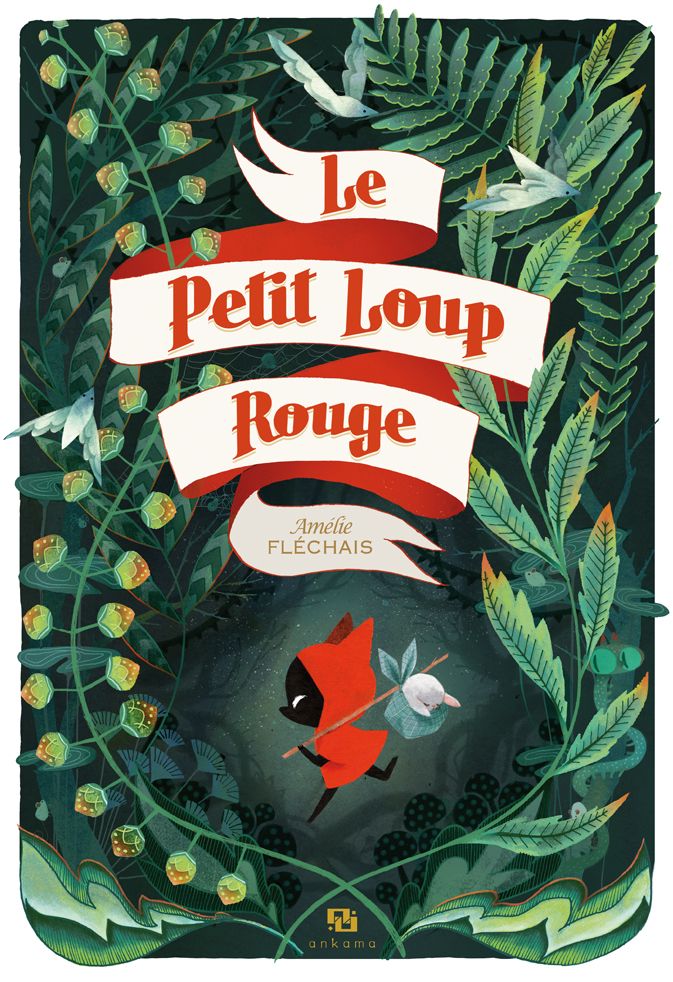 So she went to the bed and drew back the curtains. There lay her grandmother with her cap pulled far over her face, and looking very strange.
So she went to the bed and drew back the curtains. There lay her grandmother with her cap pulled far over her face, and looking very strange.
"Oh, grandmother," she said, "what big ears you have."
"The better to hear you with, my child," was the reply.
"But, grandmother, what big eyes you have," she said.
"The better to see you with, my dear."
"But, grandmother, what large hands you have."
"The better to hug you with."
"Oh, but, grandmother, what a terrible big mouth you have."
"The better to eat you with."
And scarcely had the wolf said this, than with one bound he was out of bed and swallowed up Little Red Riding Hood.
When the wolf had appeased his appetite, he lay down again in the bed, fell asleep and began to snore very loud. The huntsman was just passing the house, and thought to himself, how the old woman is snoring. I must just see if she wants anything.
So he went into the room, and when he came to the bed, he saw that the wolf was lying in it.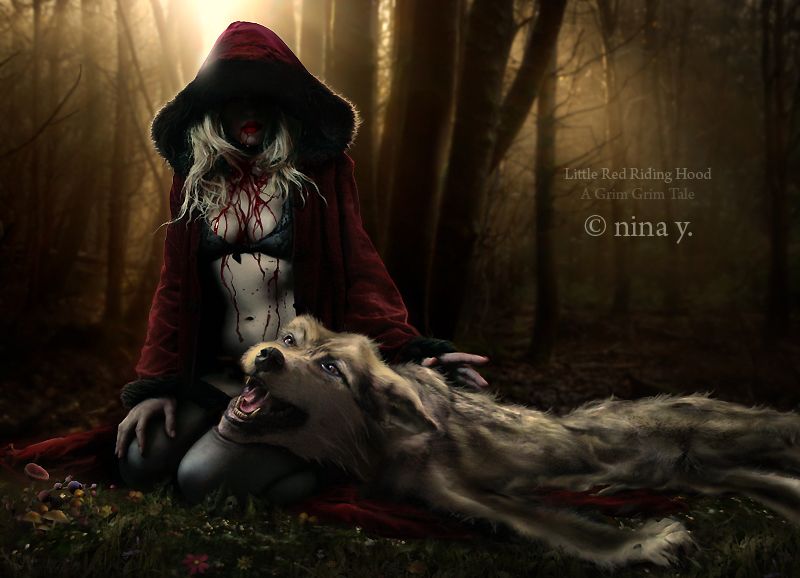 "Do I find you here, you old sinner," said he. "I have long sought you."
"Do I find you here, you old sinner," said he. "I have long sought you."
Then just as he was going to fire at him, it occurred to him that the wolf might have devoured the grandmother, and that she might still be saved, so he did not fire, but took a pair of scissors, and began to cut open the stomach of the sleeping wolf.
When he had made two snips, he saw the Little Red Riding Hood shining, and then he made two snips more, and the little girl sprang out, crying, "Ah, how frightened I have been. How dark it was inside the wolf."
And after that the aged grandmother came out alive also, but scarcely able to breathe. Little Red Riding Hood, however, quickly fetched great stones with which they filled the wolf's belly, and when he awoke, he wanted to run away, but the stones were so heavy that he collapsed at once, and fell dead.
Then all three were delighted. The huntsman drew off the wolf's skin and went home with it. The grandmother ate the cake and drank the wine which Little Red Riding Hood had brought, and revived, but Little Red Riding Hood thought to herself, as long as I live, I will never by myself leave the path, to run into the wood, when my mother has forbidden me to do so.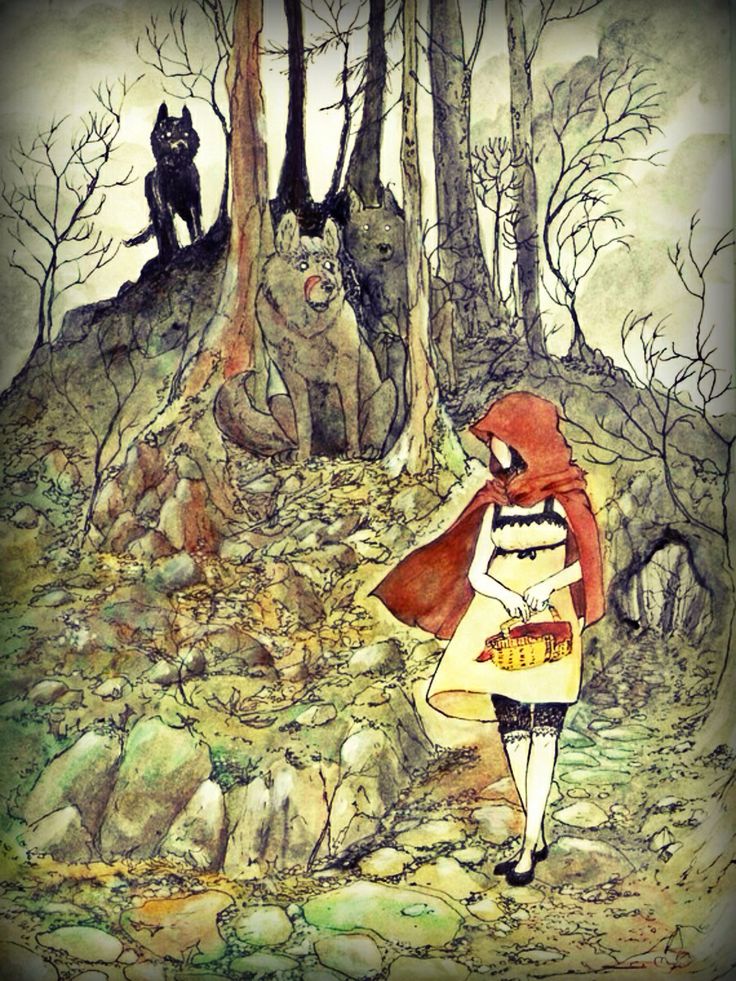
It is also related that once when Little Red Riding Hood was again taking cakes to the old grandmother, another wolf spoke to her, and tried to entice her from the path. Little Red Riding Hood, however, was on her guard, and went straight forward on her way, and told her grandmother that she had met the wolf, and that he had said good-morning to her, but with such a wicked look in his eyes, that if they had not been on the public road she was certain he would have eaten her up. "Well," said the grandmother, "we will shut the door, that he may not come in."
Soon afterwards the wolf knocked, and cried, "open the door, grandmother, I am Little Red Riding Hood, and am bringing you some cakes."
But they did not speak, or open the door, so the grey-beard stole twice or thrice round the house, and at last jumped on the roof, intending to wait until Little Red Riding Hood went home in the evening, and then to steal after her and devour her in the darkness. But the grandmother saw what was in his thoughts.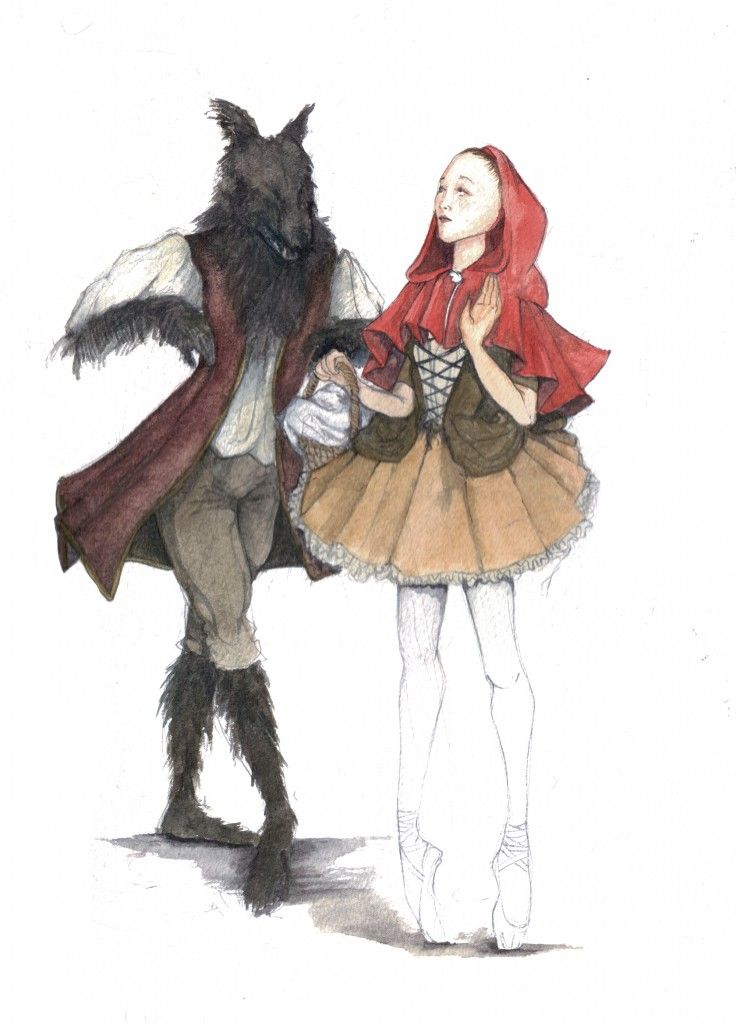 In front of the house was a great stone trough, so she said to the child, take the pail, Little Red Riding Hood. I made some sausages yesterday, so carry the water in which I boiled them to the trough. Little Red Riding Hood carried until the great trough was quite full. Then the smell of the sausages reached the wolf, and he sniffed and peeped down, and at last stretched out his neck so far that he could no longer keep his footing and began to slip, and slipped down from the roof straight into the great trough, and was drowned. But Little Red Riding Hood went joyously home, and no one ever did anything to harm her again.
In front of the house was a great stone trough, so she said to the child, take the pail, Little Red Riding Hood. I made some sausages yesterday, so carry the water in which I boiled them to the trough. Little Red Riding Hood carried until the great trough was quite full. Then the smell of the sausages reached the wolf, and he sniffed and peeped down, and at last stretched out his neck so far that he could no longer keep his footing and began to slip, and slipped down from the roof straight into the great trough, and was drowned. But Little Red Riding Hood went joyously home, and no one ever did anything to harm her again.
You may enjoy reading a "fractured fairy tale" version of this story in rhyme, How Little Red Riding Hood Came to Be Eaten, in our collection of Favorite Fairy Tales.
The story of Little Red Riding Hood
[en español]
by Leanne Guenther
Once upon a time, there was a little
girl who lived in a village near the forest. Whenever she went out, the little girl
wore a red riding cloak, so everyone in the village called her Little Red Riding Hood.
Whenever she went out, the little girl
wore a red riding cloak, so everyone in the village called her Little Red Riding Hood.
One morning, Little Red Riding Hood asked her mother if she could go to visit her grandmother as it had been awhile since they'd seen each other.
"That's a good idea," her mother said. So they packed a nice basket for Little Red Riding Hood to take to her grandmother.
When the basket was ready, the little girl put on her red cloak and kissed her mother goodbye.
"Remember, go straight to Grandma's house," her mother cautioned. "Don't dawdle along the way and please don't talk to strangers! The woods are dangerous."
"Don't worry, mommy," said Little Red Riding Hood, "I'll be careful."
But when Little Red Riding
Hood noticed some lovely flowers in the woods, she forgot her promise to
her mother. She picked a few, watched the butterflies flit about for
awhile, listened to the frogs croaking and then picked a few
more.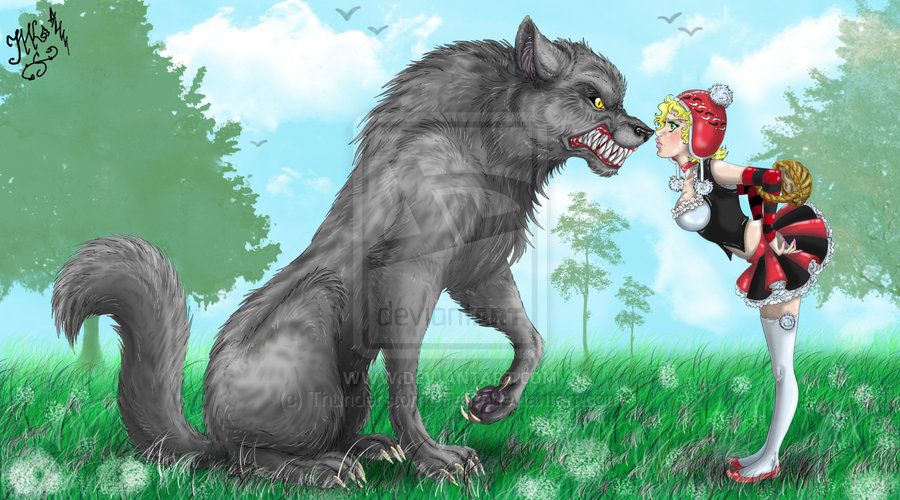
Little Red Riding Hood was enjoying the warm summer day so much, that she didn't notice a dark shadow approaching out of the forest behind her...
Suddenly, the wolf appeared beside her.
"What are you doing out here, little girl?" the wolf asked in a voice as friendly as he could muster.
"I'm on my way to see my Grandma who lives through the forest, near the brook," Little Red Riding Hood replied.
Then she realized how late she was and quickly excused herself, rushing down the path to her Grandma's house.
The wolf, in the meantime, took a shortcut...
The wolf, a little out of breath from running, arrived at Grandma's and knocked lightly at the door.
"Oh thank goodness dear! Come in,
come in! I was worried sick that something had happened to you in
the forest," said Grandma thinking that the knock was her
granddaughter.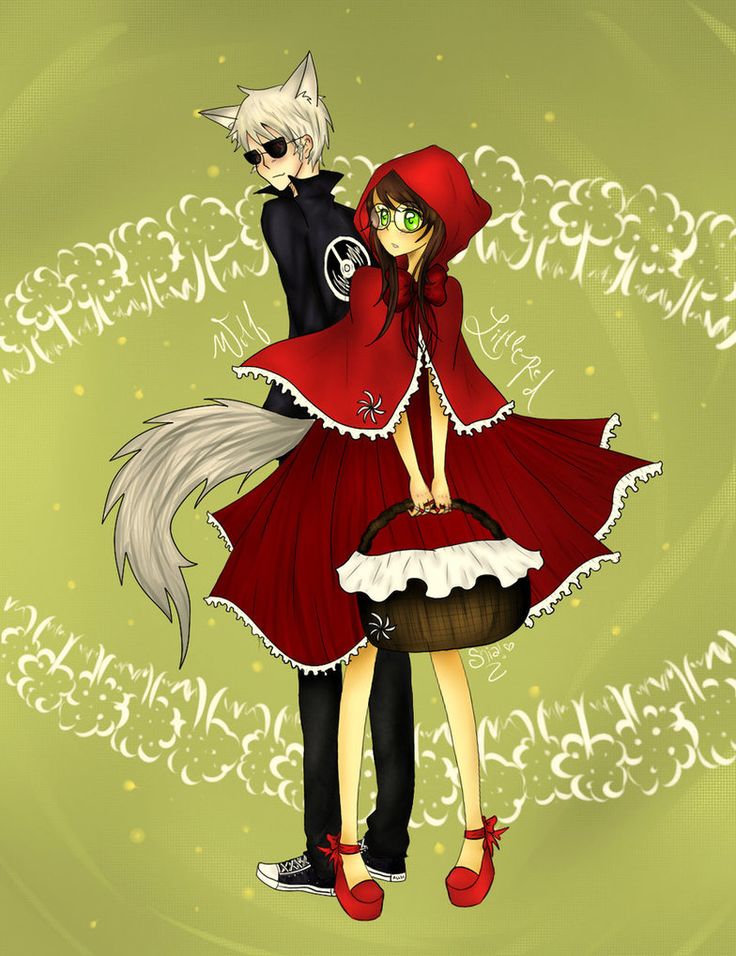
The wolf let himself in. Poor Granny did not have time to say another word, before the wolf gobbled her up!
The wolf let out a satisfied burp, and then poked through Granny's wardrobe to find a nightgown that he liked. He added a frilly sleeping cap, and for good measure, dabbed some of Granny's perfume behind his pointy ears.
A few minutes later, Red Riding Hood knocked on the door. The wolf jumped into bed and pulled the covers over his nose. "Who is it?" he called in a cackly voice.
"It's me, Little Red Riding Hood."
"Oh how lovely! Do come in, my dear," croaked the wolf.
When Little Red Riding Hood entered the little cottage, she could scarcely recognize her Grandmother.
"Grandmother! Your voice sounds so odd. Is something the matter?" she asked.
"Oh, I just have touch of a cold,"
squeaked the wolf adding a cough at the end to prove the point.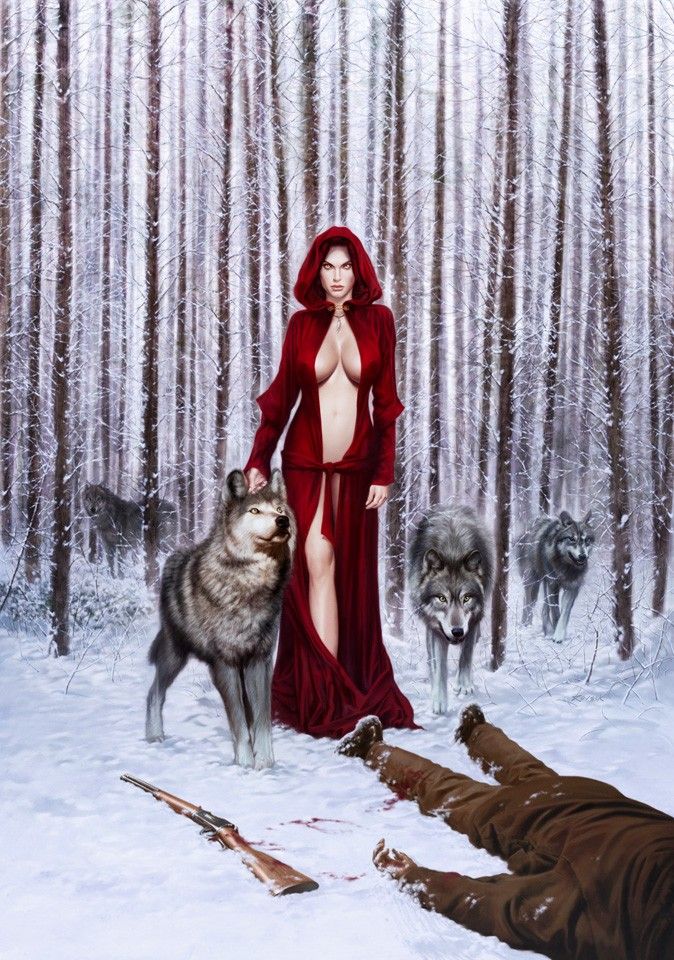
"But Grandmother! What big ears you have," said Little Red Riding Hood as she edged closer to the bed.
"The better to hear you with, my dear," replied the wolf.
"But Grandmother! What big eyes you have," said Little Red Riding Hood.
"The better to see you with, my dear," replied the wolf.
"But Grandmother! What big teeth you have," said Little Red Riding Hood her voice quivering slightly.
"The better to eat you with, my dear," roared the wolf and he leapt out of the bed and began to chase the little girl.
Almost too late, Little Red Riding Hood realized that the person in the bed was not her Grandmother, but a hungry wolf.
She ran across the room and through the door, shouting, "Help! Wolf!" as loudly as she could.
A woodsman who was chopping logs nearby heard
her cry and ran towards the cottage as fast as he could.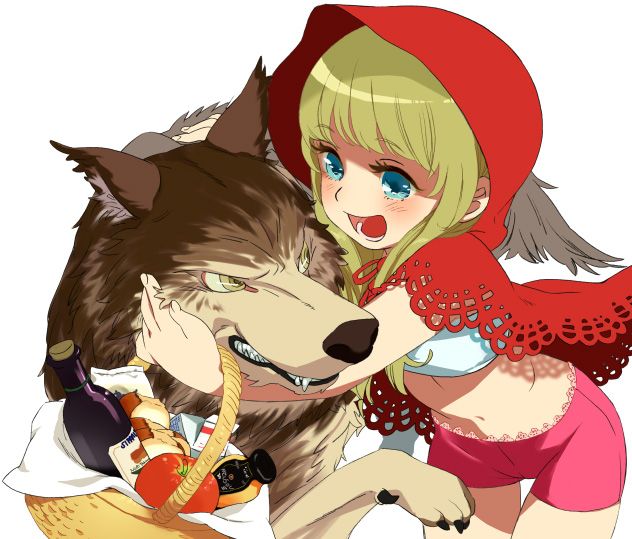
He grabbed the wolf and made him spit out the poor Grandmother who was a bit frazzled by the whole experience, but still in one piece."Oh Grandma, I was so scared!" sobbed Little Red Riding Hood, "I'll never speak to strangers or dawdle in the forest again."
"There, there, child. You've learned an important lesson. Thank goodness you shouted loud enough for this kind woodsman to hear you!"
The woodsman knocked out the wolf and carried him deep into the forest where he wouldn't bother people any longer.
Little Red Riding Hood and her Grandmother had a nice lunch and a long chat.
Printable version of this page
Story Pages Templates:
- Close the template window after printing to return to this screen.
- Set page margins to zero if you have trouble fitting the template on one page (FILE, PAGE SETUP or FILE, PRINTER SETUP in most browsers).
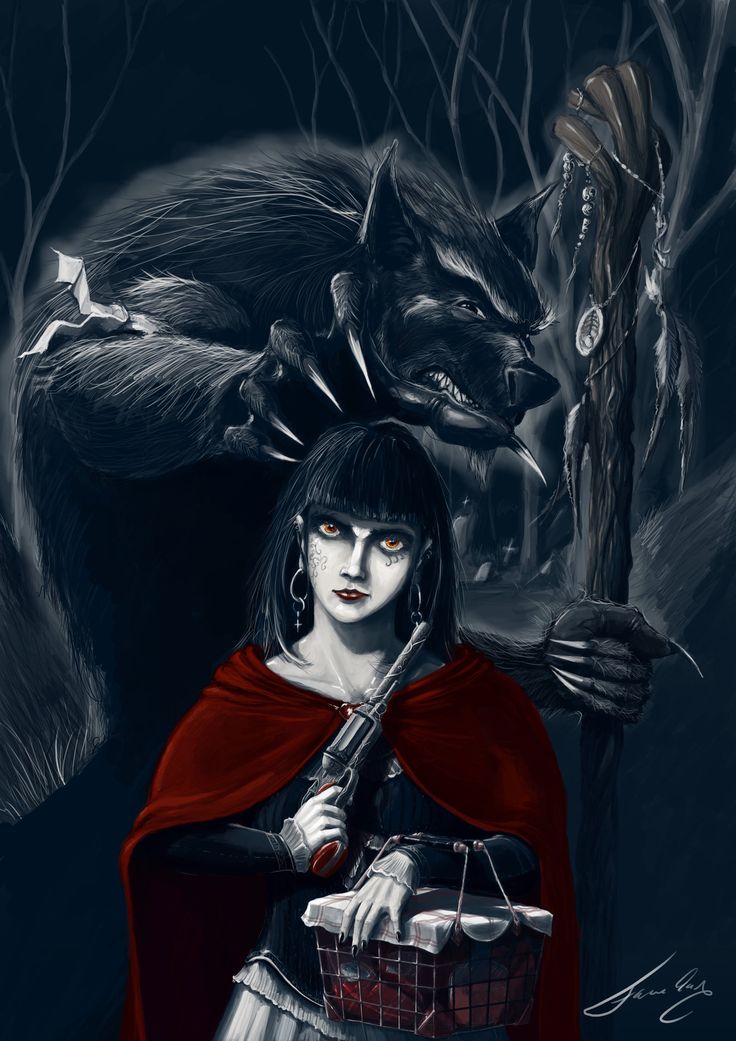
Template Page 1 (color) or (B&W)
Template Page 2 (color) or (B&W)
Template Page 3 (color) or (B&W)
Template Page 4 (color) or (B&W)
Template Page 5 (color) or (B&W)
Template Page 6 (color) or (B&W)
Template Page 7 (color) or (B&W)
Template Page 8 (color) or (B&W)
Template Page 9 (color) or (B&W)
Template Page 10 (color) or (B&W)
What it looks like, Where it lives, What it eats and Interesting facts
By redbook Reading 6 min. Published
This is a truly unique predatory animal of the canine family, the only one of the Cuon species. The Red Wolf is listed not only in the Red Book, but also in the International Red Book. In our country, this species of mammal is protected at the legislative level.
The Red Wolf is listed not only in the Red Book, but also in the International Red Book. In our country, this species of mammal is protected at the legislative level.
Contents
- Description of the animal
- How it looks like
- nature and lifestyle
- What is the
- where
- MEENTION
- natural enemies
- Red Wolf in the Red Book
- The main reasons for the disappearance
- The current situation with the population
- What measures are applied to the defends
- Interesting facts about the animal
Description of the animal
This predator appeared as a result of crossing gray wolves with coyotes. Therefore, it has an intermediate size between these two animals. nine0005
What
looks like The body length of an adult is just over a meter, the average weight varies from 12 to 20 kilograms. Males are much larger and more powerful than females. Representatives of canine predators have strong muscles and a dense elastic physique, they look like foxes in appearance, and jackals in their ears.
Representatives of canine predators have strong muscles and a dense elastic physique, they look like foxes in appearance, and jackals in their ears.
This type of wolf differs from its congeners in a special coat color. The fur has a red color with a copper tint. The color of the coat sometimes changes - it depends on the age and region of habitat. nine0005
Predator's muzzle is thin and elongated with small eyes. At the top of the head are rounded ears. Unlike gray wolves, this individual has fewer molars, but a large number of nipples.
Character and way of life
Red wolves do not live separately, they gather in small packs. All community members have family ties. The most dominant pair is at the head of the pack. All other members of the group are their offspring. The number of packs generally does not exceed twelve adults. nine0005
Most often, there are no more than two dozen predators in the team. In the case when there are a lot of animals, the flock splits into two.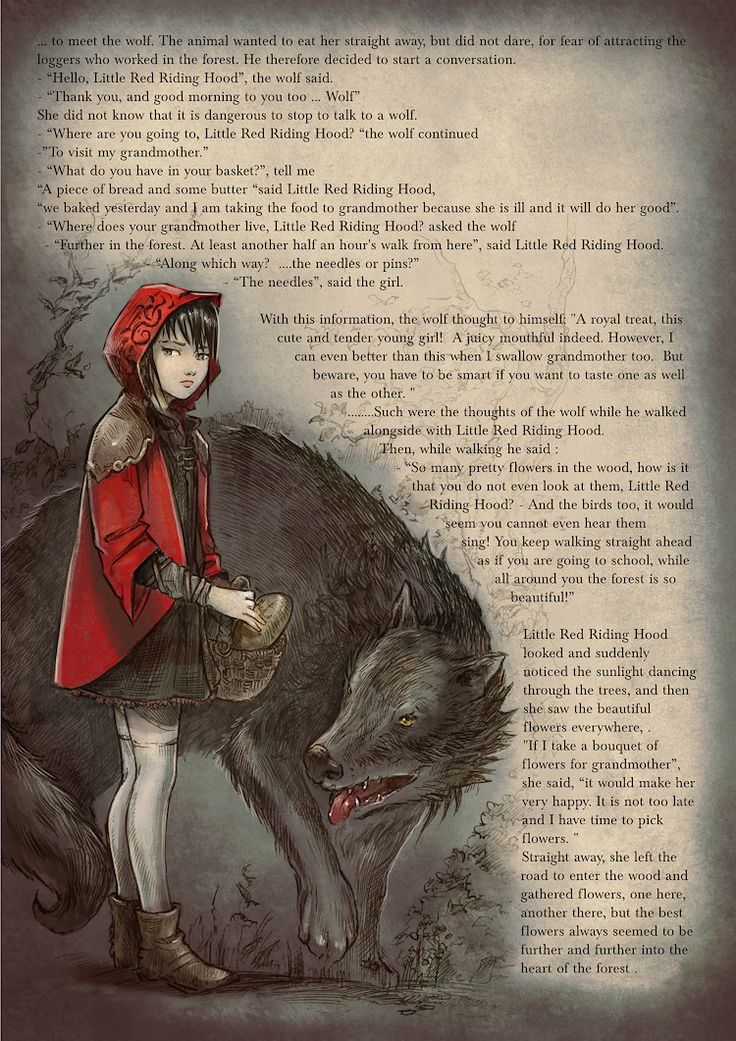
Aggression towards each other is not manifested in the team, but when a stranger appears, they are treated with caution and often show unfriendliness.
Hunt more often during daylight hours. All mature individuals participate in the search for food. Predators have several ways of hunting.
They attract ungulate mammals with certain sounds and then follow the prey in a line. There is another strategy when individuals assign roles. One part of the flock pursues the prey, and the second intercepts it at the moment of the chase. nine0005
What it eats
The red wolf is an ordinary predator, so the main source of food is small wild ungulates, and they also pick up carrion.
It happens that individuals choose a large animal, in which case they hunt in packs. They pursue a potential victim exclusively in the daytime, driving him into the water, where the beast will become more vulnerable to attack.
It is known that in the summer the diet of wolves includes food of plant origin, in particular, mountain rhubarb greens.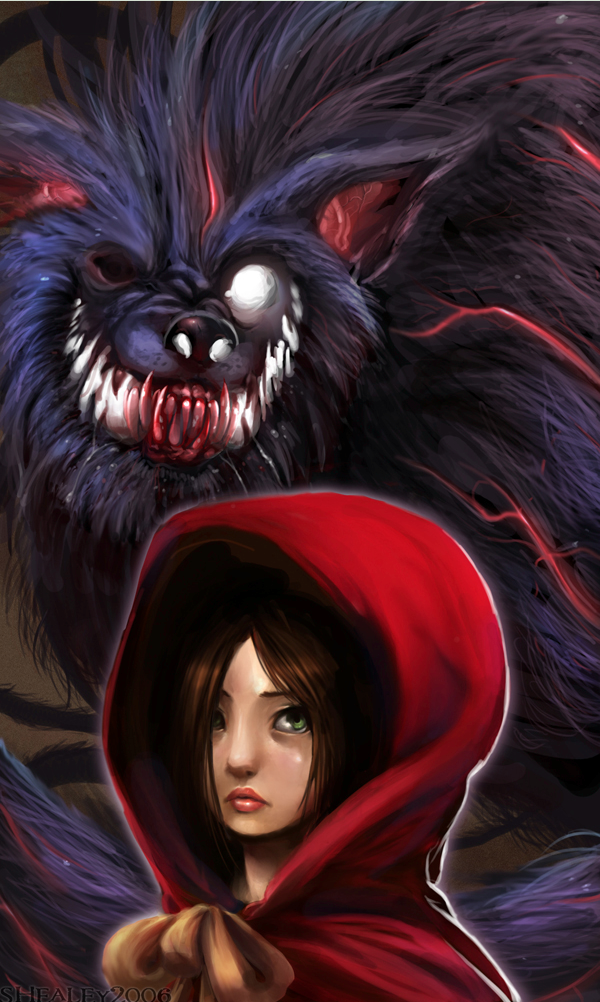 Females feed their offspring with this plant. To do this, they burp half-digested inflorescences and feed puppies with this. nine0005
Females feed their offspring with this plant. To do this, they burp half-digested inflorescences and feed puppies with this. nine0005
Where it lives
The predator lives in various areas of the area. It can be mountain foothills, coniferous forests or cedar thickets.
Thick layers of snow or deep drifts are unacceptable to wolves, as this makes it difficult to hunt game, so they look for other habitats. However, regardless of the natural habitat, for a full-fledged life, they need a shallow snow cover.
These animals are not sedentary and they travel long distances in search of food. This type of dog representatives is found in Indonesia, India, Tibet, China, Mongolia and on the islands of Sumatra and Java. In Russia, it can be found in the coniferous forests of Eastern Siberia. nine0005
Breeding
Red wolves are famous for their constancy and devotion to the family. Male and female form a family and mutually feed offspring.
Puppies are born all year round.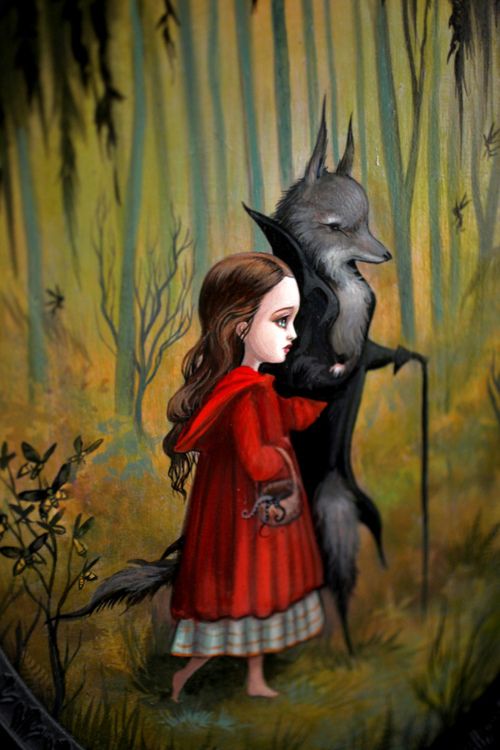 If you follow the statistics, then the offspring often appears in the winter or early spring. A she-wolf bears offspring for two months.
If you follow the statistics, then the offspring often appears in the winter or early spring. A she-wolf bears offspring for two months.
Puppies are born blind in the amount of 6-8 puppies. Their appearance is reminiscent of German Shepherd babies. After two weeks, the puppies are already beginning to see. At the age of three months, wolf cubs begin to gradually leave the den. nine0005
Puppies begin to learn the habits of adults immediately. Having reached the age of eight months, they are allowed to participate in general hunting. Sexual maturity comes to them at a year.
Natural enemies
The red wolf is especially dangerous for its relatives - the gray wolf and the coyote. In defending the territory, they exterminated the red wolves, as a result of which the latter were on the verge of extinction.
Natural enemies include lynxes and snow leopards. They are also willing to kill animals to avoid competition for food. nine0005
An important danger for predators is man and his activities.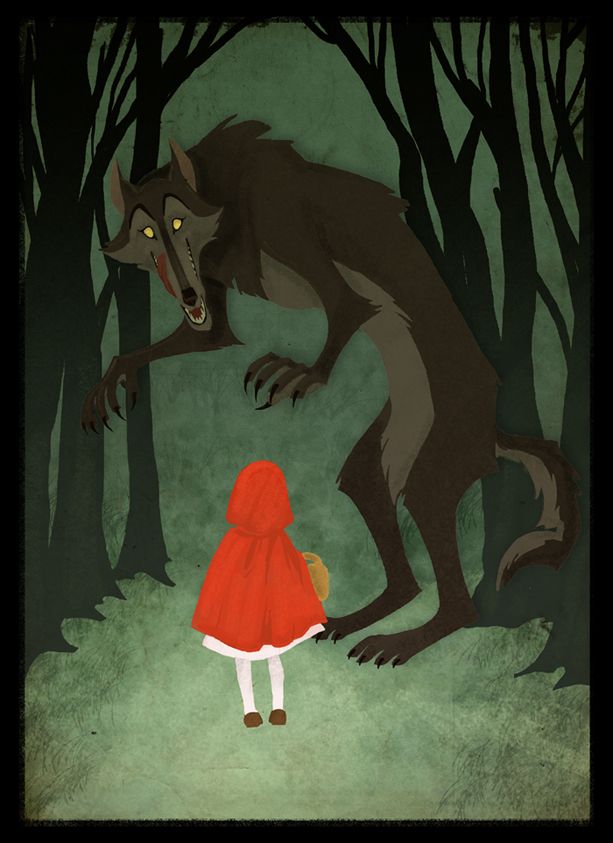 Hunting for the animal was carried out on a large scale. People set up massive ambushes, made ingenious traps to kill the beast in order to obtain meat, skins and furs.
Hunting for the animal was carried out on a large scale. People set up massive ambushes, made ingenious traps to kill the beast in order to obtain meat, skins and furs.
Red wolves differ from the usual set of sounds when communicating with each other. Their howl resembles a melodic lingering singing.
Red wolf in the Red Book
In 1996, the predator was included in the list of the International Union for Conservation of Nature, as a species of canine under the threat of extinction. nine0005
The main causes of extinction
Diseases such as plague and rabies contribute to a sharp decrease in the number of individuals. These diseases progressed rapidly and were transmitted to healthy animals, causing mass death.
Human development of untouched natural places also contributed to the extinction of animals. And also people exterminated predators, believing that they attacked livestock. Although, in fact, red wolves did not do this, unlike their gray relatives. nine0005
nine0005
Large animals - snow leopards, tigers, coyotes, cougars also contributed to the reduction of this type of canine representatives. Predators attacked red wolves in order to secure territory for hunting.
Current population situation
For the period of 2012, there were no more than 300 red individuals in the world, of which 207 lived in captivity, including in the zoo. At present, the situation has not changed much.
The thing is that in the reserve of North Carolina the number of individuals is unstable. The population either increases or decreases. nine0005
In this regard, it is very difficult to make accurate forecasts for the future, and even more so, poachers are still catching in the wild. Therefore, it is impossible to give an unambiguous answer about the further fate of these individuals.
What measures are taken to protect
In order to preserve the species of the animal, it was listed in the Red Book of the Russian Federation and the Red Book of the IUCN. It has been given the status of an endangered species. Trapping and hunting for it is strictly prohibited if this requirement is violated, criminal punishment is applied. nine0005
It has been given the status of an endangered species. Trapping and hunting for it is strictly prohibited if this requirement is violated, criminal punishment is applied. nine0005
In order to increase the population, the areas of the predator's habitat are being explored, and a ban on human development of these territories is introduced. The number of ungulates in this area is also multiplied to feed the red wolves.
In the wild, the duration of this species of animal is 8 years, and in captivity - 14 years.
Interesting facts about the animal
The red wolf can be seen on the one ruble coin issued in 2005. And on a Kazakh coin of five hundred tenge, as well as on a Kazakh postage stamp. nine0005
Most of the animal lives in India, it is there that a reserve has been made where, under a license, on legal grounds, you can hunt this predator.
Three adults can eat a large deer whole in three minutes, and a flock can easily knock down an adult tiger.
In 1939, about 800 individuals were exterminated in Texas.
The red wolf is a beautiful and unique animal. But many people are unaware of its existence due to its disappearance. Therefore, work is being carried out in the habitats of individuals in order to explain to the public that this species has a protected status. nine0005
Red wolf
Kingdom: Animals Type: Chordates Class: Mammals Order: Carnivores Family: Canidae Genus: Wolves Style: Wolf Subspecies: Red wolf
Scientific name: Canis lupus rufus Audubon
Generic name:
English-Red Wolf
Species Authority: Audubon & Bachman, 1851
Endangered. Appearance, see the description of the wolf. Body length including tail volume 140-165 cm. Tail length 34-42 cm. The build is lighter than that of a wolf. The color of the hairline is reddish-brown, especially on the muzzle, ears and outer surfaces of the limbs. There are dark colored specimens. nine0005
There are dark colored specimens. nine0005
By the time the first Europeans arrived in America, red wolves inhabited what is now the United States from Central Texas to the Atlantic coast and from the Gulf of Mexico north to the Ohio Valley and Southern Pennsylvania. By the end of the 1970s, purebred red wolves were believed to have survived only in southeast Texas and the surrounding areas of Louisiana. They are probably gone by now.
Formerly inhabited by forests and coastal prairies. They currently live in coastal prairie swamps. Active at night. They feed on small mammals: rabbits, squirrels, muskrats, as well as crustaceans and insects. nine0005
A breeding pair occupies an area of 8-16 km2. The lair is arranged in the sandy hills. Females bring 2-7 cubs in April - May, most of which die before the age of 6 months from parasitic diseases. By 1980, they were being "biologically destroyed" by interbreeding with coyotes. 50 purebred red wolves, preserved in nature, belonged to a population that included hybrid animals and coyotes.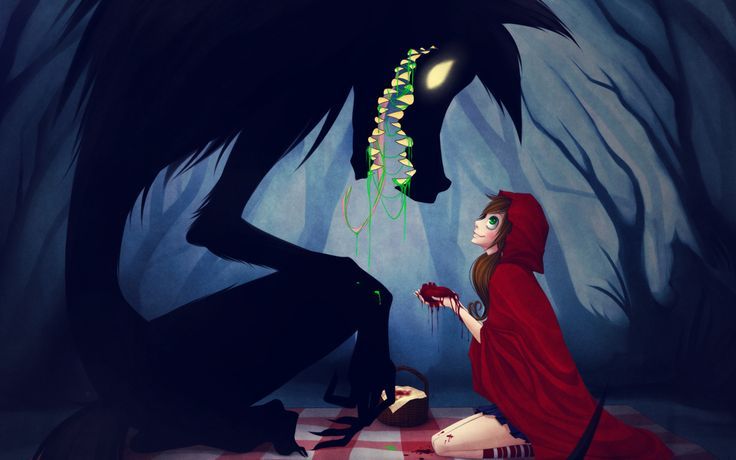
Decline in numbers caused by habitat change and human persecution. Of particular danger is hybridization with coyotes. Deforestation and development of territories for agriculture allowed coyotes to spread east from their original range and the once existing gap between coyotes and red wolves by the beginning of the 20th century. disappeared. Protected by law. nine0005 Photo Credit: Tim Ross - Own work, Public Domain
Red List of Categories and Criteria: Critically Endangered D ver 3.1
Publication year: 2008
Assessment Date: 2008-06-30
IUCN
assessment information 2004 - Critically Endangered (CR) (in critical danger) 1996 - Critically Endangered (CR) (in critical danger) 1994 - Endangered (E) (in danger) nineteen90 - Endangered (E) 1988 - Endangered (E) (in danger) 1986 - Endangered (E) (in danger) 1982 - Endangered (E) (in danger) Distribution area Photo: Author: [3] & [4] - [1] & [2], CC BY 2.0, https://commons.











